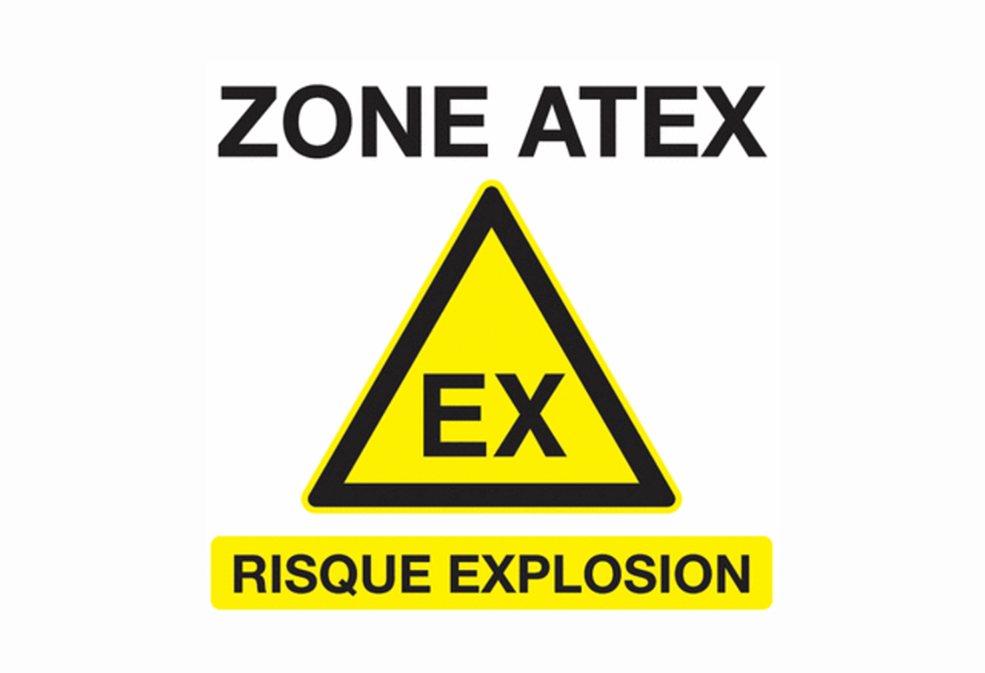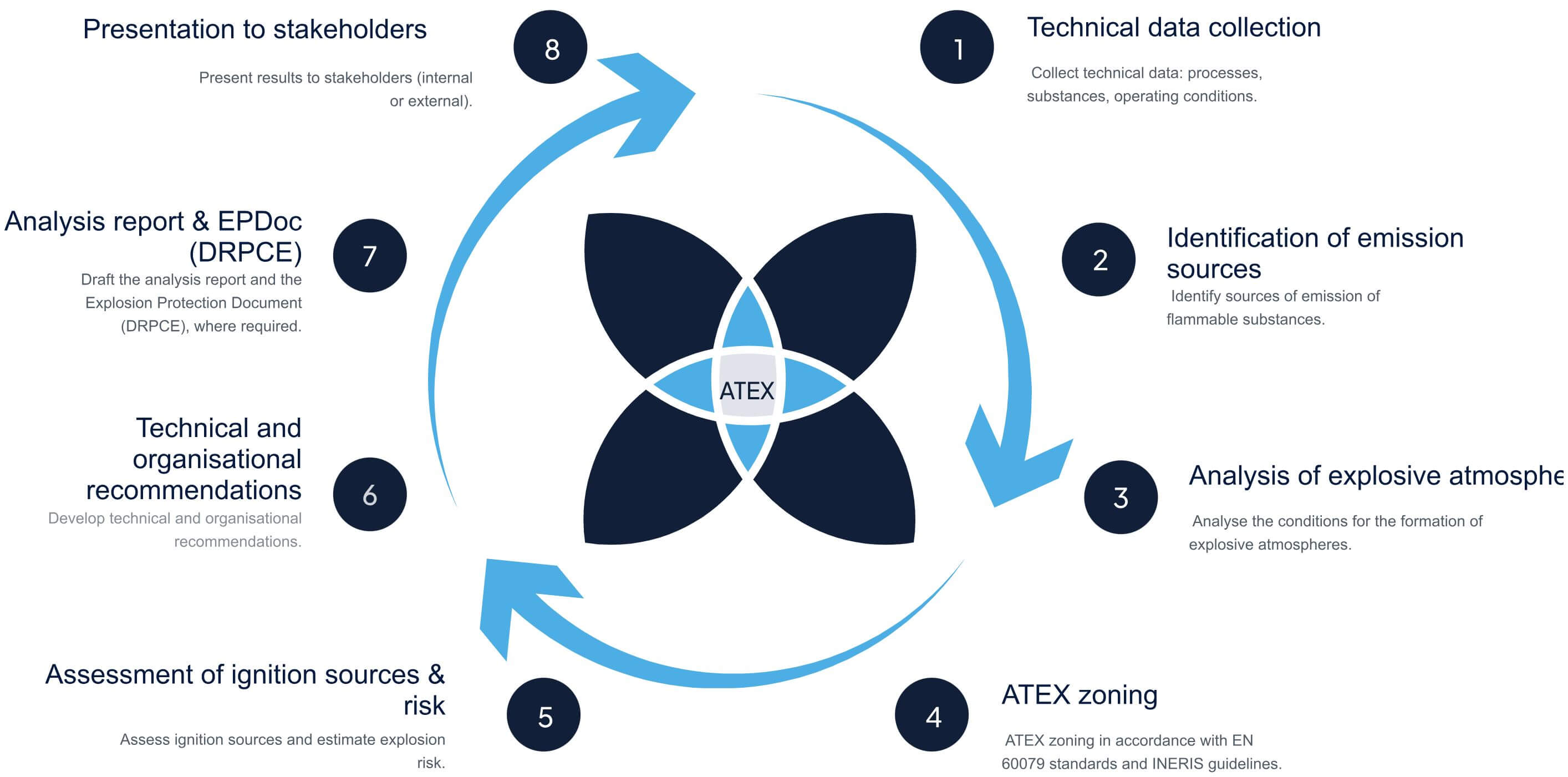Login

Risk analysis
Explosive atmospheres can occur in many industrial sectors:
Poor risk management can lead to explosions with serious consequences — human, environmental, and economic.
The regulations require operators to:

We support you in managing explosion risks through comprehensive services:
 Assessment of explosion risks (hazard studies, single risk assessment - DUERP)
Assessment of explosion risks (hazard studies, single risk assessment - DUERP) Definition of ATEX zones based on the characteristics of handled substances (gases, vapors, dust...)
Definition of ATEX zones based on the characteristics of handled substances (gases, vapors, dust...) Development of ATEX zoning plans (gas and/or dust)
Development of ATEX zoning plans (gas and/or dust) Recommendations for the selection and installation of certified equipment (Ex-rated material)
Recommendations for the selection and installation of certified equipment (Ex-rated material) Support in writing the DRPCE (Explosion Protection Document)
Support in writing the DRPCE (Explosion Protection Document) Laboratory analysis of your products' explosiveness characteristics
Laboratory analysis of your products' explosiveness characteristics Support in achieving regulatory compliance
Support in achieving regulatory compliance Training and awareness for personnel
Training and awareness for personneluse case

use case

informations
We operate in all industrial sectors concerned by explosion risks, including:
Each intervention is tailored to the specific features of your facilities to prevent explosions, protect people, and ensure regulatory compliance.

























F. A. Q

|
|
|